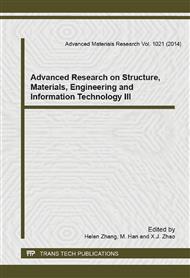p.181
p.186
p.190
p.196
p.200
p.205
p.209
p.214
p.218
Experimental Research on CuCr Contacts Cathode Spots with Material Properties
Abstract:
Vacuum arc is supported by metal vapor which comes from cathode spots, the research on cathode spots can reveal the nature of vacuum arc, this will help improve the breaking capacity of the vacuum switch. This paper constructs the research platform which is based on vacuum arcing chamber, the contact material is CuCr50, through high-speed camera on the cathode spots, analysis found that: cathode spots usually consist of multiple micro spots, these spots stay together and form a micro-spot group; the minimum maintain current of a single micro spot is 7A, and the upper limit current is 25A; the upper limit current of a single cathode spot is 100A; along with the increase of current, the division of the micro-spot group will be more and more obvious, and eventually evolve into multiple independent cathode spots.
Info:
Periodical:
Pages:
200-204
Citation:
Online since:
August 2014
Authors:
Keywords:
Price:
Сopyright:
© 2014 Trans Tech Publications Ltd. All Rights Reserved
Share:
Citation:


